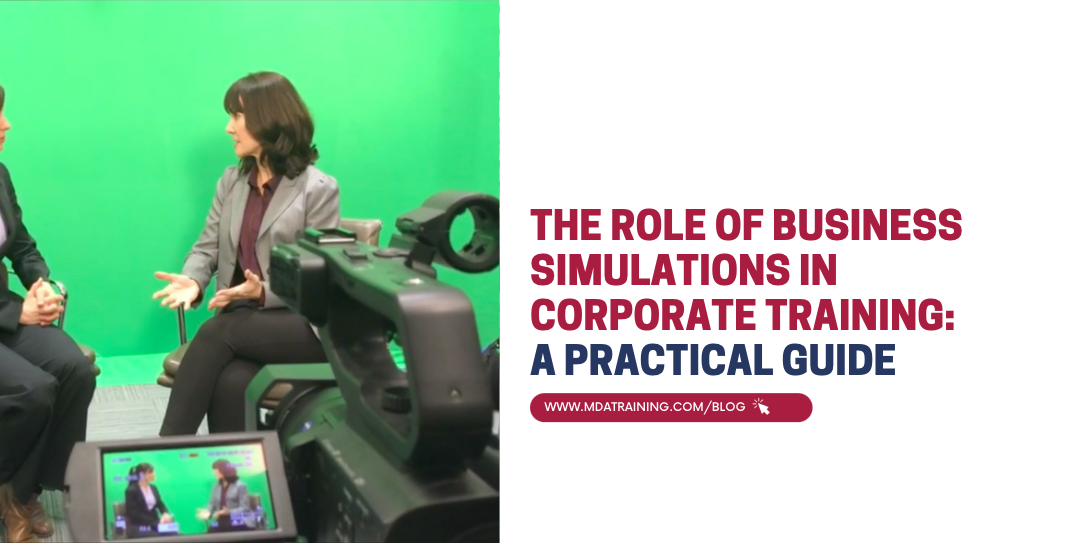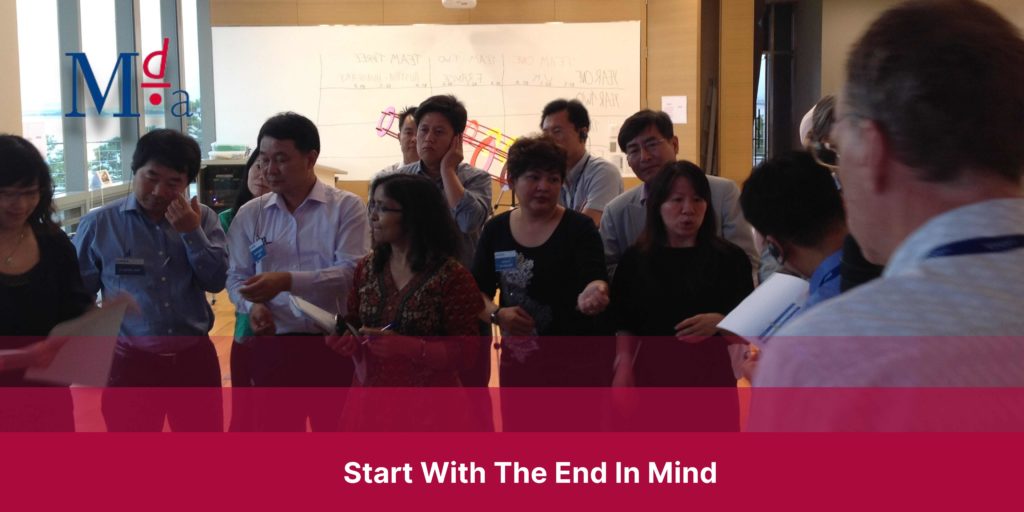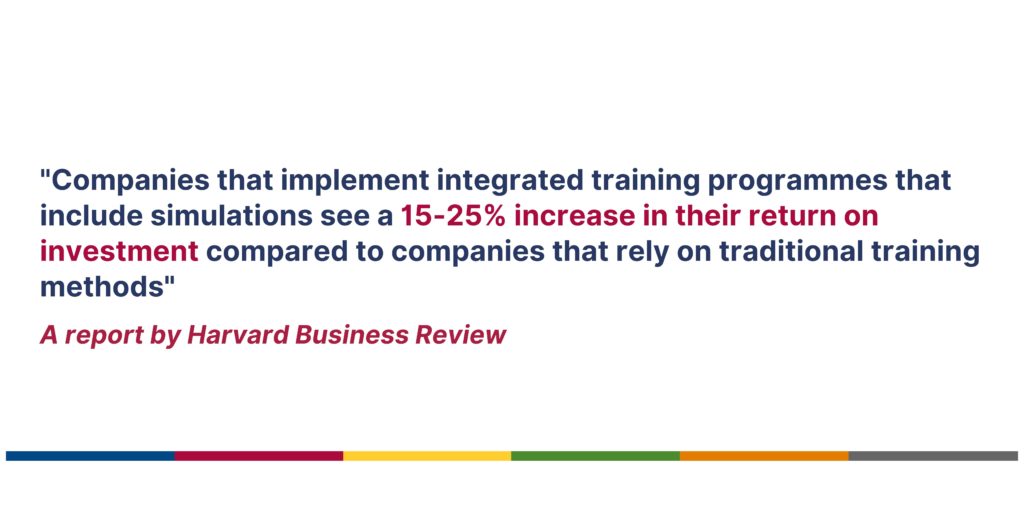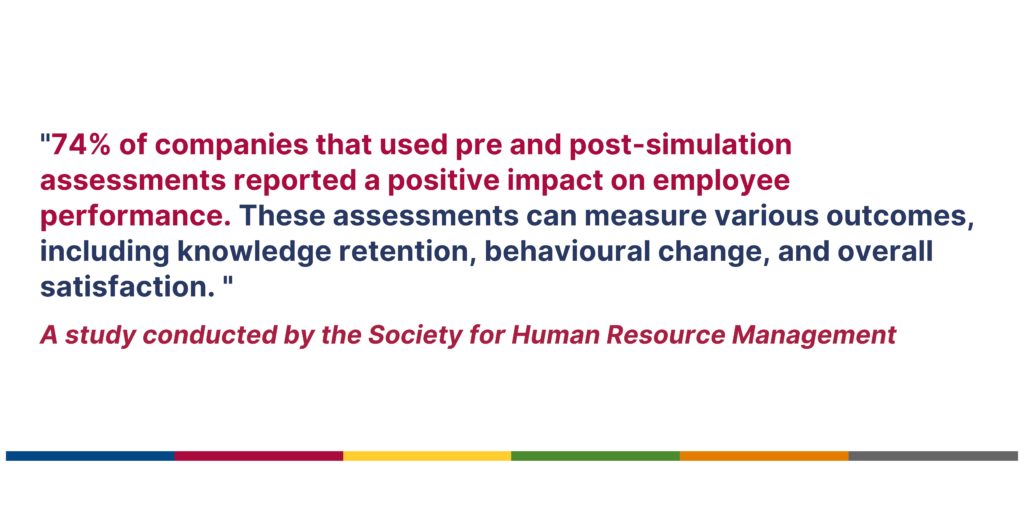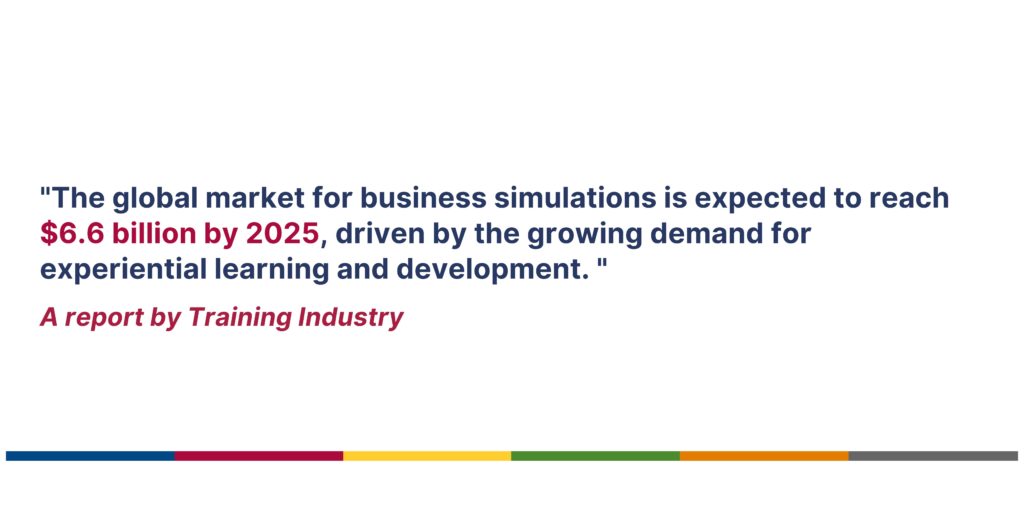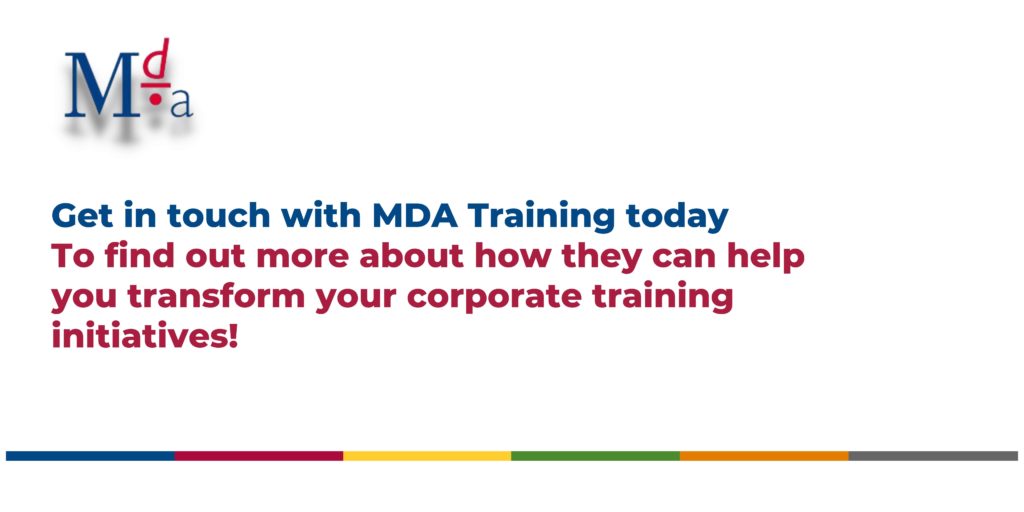In today’s fast-paced business world, it is essential that companies have a workforce that is skilled, competent and adaptable.
Corporate training is a key aspect of developing these skills, and one tool that has become increasingly popular in recent years is business simulations.
A business simulation is a scenario-based training tool that allows participants to experience real-life business situations in a simulated environment.
Business simulations have become more sophisticated and realistic over the years, offering participants a chance to explore and challenge different ways of working, building knowledge and understanding, and improving their business acumen and financial skills.
Moreover, business simulations provide a safe space for individuals to make mistakes and learn from them without impacting the actual business.
The following is a practical guide on the role of business simulations in corporate training, and how they can be used effectively to achieve measurable outcomes.
Start With The End In Mind
When considering implementing a business simulation as part of corporate training, it is essential to start with the end in mind.
This means being clear about the objectives and outcomes that you want to achieve. Setting specific goals and objectives will ensure that the simulation is designed to meet the desired outcomes and that the learning outcomes are measurable.
It is also important to involve the participants in the planning process. This not only helps to ensure that the simulation is relevant to their needs and aligned to the company’s objectives, but it also gives them ownership and a sense of accountability for the outcomes.
Implementing a business simulation as part of corporate training can be a powerful tool for improving leadership skills and behaviours, but it is crucial to start with the end in mind.
For instance, when American Express wanted to improve the leadership skills of its employees, they used a business simulation called “Leadership Gold” that focused on building strategic thinking, decision-making, and communication skills.
By starting with specific objectives, American Express was able to tailor the simulation to meet the company’s specific needs.
Moreover, involving participants in the planning process can significantly impact the effectiveness of the simulation.
When Google implemented a simulation called “g2g: Googlers-to-Googlers,” they involved their employees in the design and delivery of the simulation.
This allowed participants to provide feedback on the simulation’s relevance and effectiveness, ultimately leading to a more engaging and impactful experience.
Run The Simulation As Part Of A Wider Initiative Or Programme
Running a business simulation in isolation can be limiting in terms of its effectiveness. It is much more effective when it is part of a wider initiative or programme.
By integrating the simulation into a broader learning programme, participants can gain a deeper understanding of how the simulation fits into their job roles and the wider business context.
This will also enable them to apply the knowledge and skills learned in the simulation to real-life situations, increasing the chances of the training being successful and driving behavioural change.
For instance, when Coca-Cola wanted to improve their employees’ business acumen, they implemented a programme that included business simulations alongside other training methods like e-learning and classroom sessions.
By integrating the simulations into a broader programme, Coca-Cola was able to provide their employees with a more comprehensive understanding of the company’s operations, leading to improved decision-making and a better bottom line.
Integrating business simulations into a broader learning programme is essential for increasing their effectiveness.
According to a report by Harvard Business Review, companies that implement integrated training programmes that include simulations see a 15-25% increase in their return on investment compared to companies that rely on traditional training methods.
By incorporating simulations into a broader programme, participants gain a more holistic understanding of their job roles and the wider business context, which leads to better decision-making and behavioural change.
Balance Participant Numbers And Duration To Ensure Effective Learning Experience
While business simulations can be expensive, it is essential not to cut corners or try to squeeze too much into one simulation.
Trying to achieve too much in a single simulation can have the opposite effect and dilute the learning outcomes.
Additionally, not allowing enough time for the simulation can impact the ability of participants to learn and retain the knowledge gained.
It is also important to consider the number of participants involved in the simulation. Having too many participants can also dilute the learning outcomes and limit the ability of participants to engage with the simulation fully.
Make It Fun, Engaging And Relevant
Engaging participants in the simulation is crucial to ensuring that they retain the knowledge and skills gained. This can be achieved by making the simulation fun, engaging and relevant. A well-designed simulation should immerse participants in the scenario, creating an authentic experience that resonates with them. This could include creating characters, scenarios and environments that are relatable to the participants.
Incorporating gamification techniques, such as points and rewards, can also increase engagement and motivation. Additionally, the use of technology, such as online simulation games, can enhance the simulation and make it even more engaging and immersive.
Measure The Outcomes
Measuring the outcomes of the business simulation is critical to ensure that the desired outcomes have been achieved.
The key to measuring the outcomes is to establish clear objectives and goals at the beginning of the planning process.
The use of pre and post-simulation assessments can be a useful tool in measuring the impact of the simulation.
These assessments can measure a range of outcomes, including knowledge retention, behavioural change, and overall satisfaction.
For instance, when the Australian government implemented a business simulation to improve the financial management skills of its employees, they set clear objectives and goals, including improving financial management skills, identifying opportunities for cost savings and developing leadership capabilities.
In a study conducted by the Society for Human Resource Management, 74% of companies that used pre and post-simulation assessments reported a positive impact on employee performance.
These assessments can measure various outcomes, including knowledge retention, behavioural change, and overall satisfaction.
Industry Insights And Research
Numerous studies have been conducted on the effectiveness of business simulations in corporate training.
One study conducted by the Society for Human Resource Management found that simulations were among the most effective training methods for developing leadership skills and behaviours.
The study also found that simulations were particularly effective in developing critical thinking, decision-making, and problem-solving skills.
Another study conducted by the International Journal of Management Education found that business simulations were effective in teaching finance and accounting skills.
The study also found that participants in the simulation had a better understanding of financial statements and financial ratios and were better equipped to make financial decisions.
There are also several industry insights that suggest business simulations are becoming increasingly popular in corporate training.
According to a report by Training Industry, the global market for business simulations is expected to reach $6.6 billion by 2025, driven by the growing demand for experiential learning and development.
Conclusion
Business simulations can be a powerful tool in corporate training, providing participants with a safe space to learn, make mistakes and apply their knowledge in a simulated business environment.
However, to achieve maximum effectiveness, it is essential to have clear objectives and outcomes, run the simulation as part of a wider initiative or programme, be mindful of costs, make it fun and engaging, and measure the outcomes.
Business simulations can offer significant benefits for organisations, including improved business acumen, financial skills, and leadership behaviours.
As the business world continues to evolve, and the demand for skilled and adaptable workforces grows, it is likely that the use of business simulations in corporate training will continue to rise.
If you’re interested in implementing business simulations in your corporate training initiatives, MDA Training can help.
With over 32 years of experience, MDA Training has a proven track record of delivering bespoke and innovative training solutions to businesses worldwide.
Our expert trainers can work with you to design and deliver business simulations that meet your specific needs and objectives, ensuring maximum impact and measurable outcomes. Get in touch with MDA Training today to find out more about how we can help you transform your corporate training initiatives


















